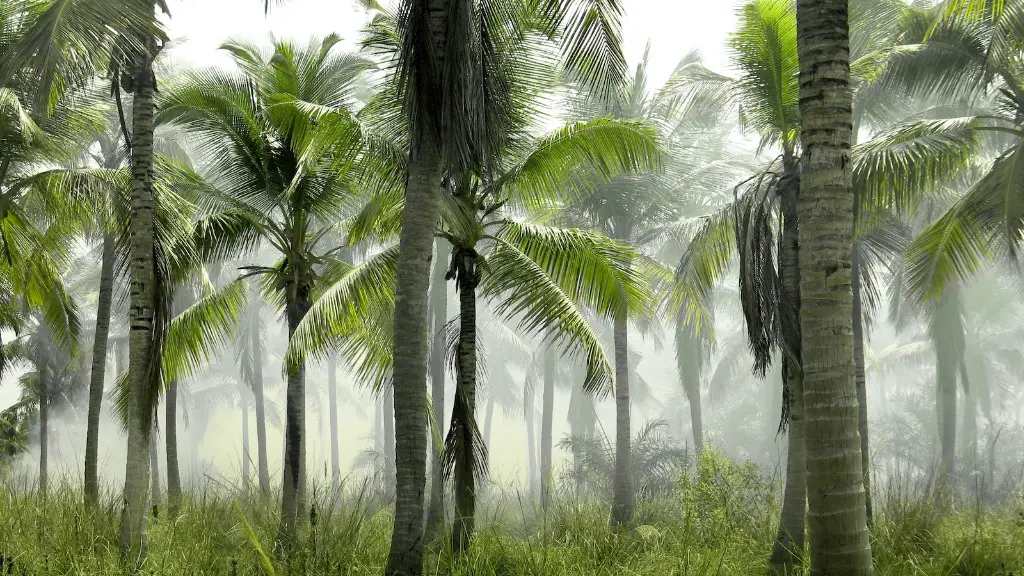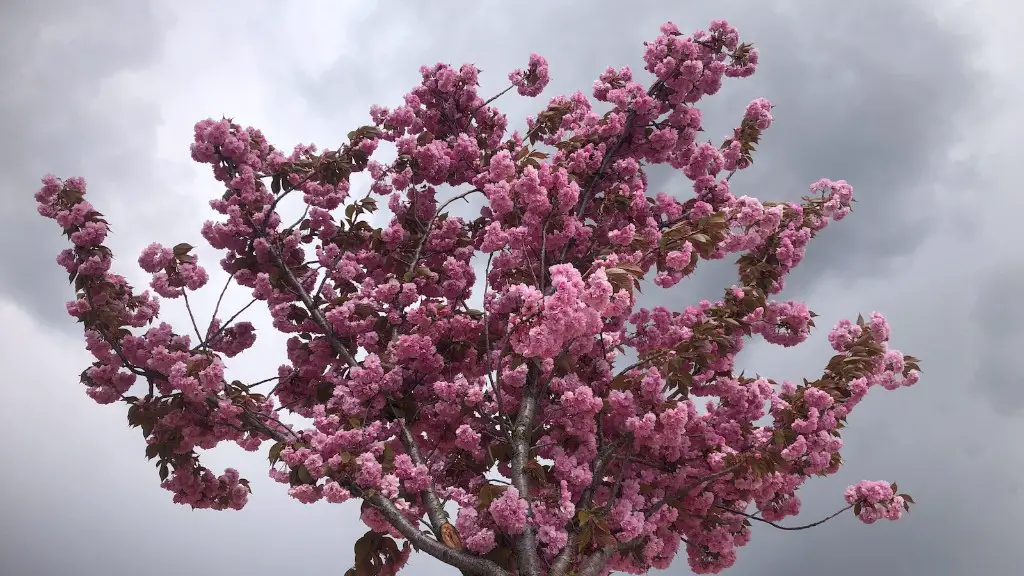Landscapers and gardeners all around the world know the beauty and drama of palms trees, which is why homeowners all over are using them to create tropical oases in their gardens. While a palm tree can certainly stand on its own, the addition of plants and other foliage makes it all the more fascinating. But what kind of plants should you choose when looking to fill out the space around your palm tree? Let’s explore that question.
The first point to consider when choosing plants for your palm is soil health. Before adding plants to a landscape, it’s important to assess the soil. As palm trees cannot handle overly heavy and wet soils, it’s best to avoid adding a slew of water-loving plants such as ferns, azaleas and hydrangeas. This will avoid root rot and other soil-related diseases. If you’re unsure of the health of your soil, send a sample to a local garden center or local extension office to have it tested. The test will tell you how alkaline or acidic your soil is, which is important information when selecting plants.
When looking to fill in the area around a palm tree, consider using plants that are drought-tolerant and need average water. Such plants will thrive in the heat and full sun often found near a palm tree, and won’t require regular irrigation. Popular choices for adding a splash of color and texture to a palm tree garden include annuals, perennials, and tropical foliage plants such as saponaria, bougainvillea, and ornamental grasses. Dwarf ground covers are also a great option to fill out the landscape without overwhelming the palm.
When it comes to providing a splash of color, there are a few plants in particular that are the perfect partners for palm. Agave is low maintenance and can add a brilliant touch of color and texture. Succulents planted around the base of a palm are also quite popular, and can help create a modern and visually stunning look. Standard annuals like zinnias are also great options when it comes to adding beauty—and they come in many shapes, sizes, and colors.
When planting around a palm tree, be sure to maintain an area of at least 24 inches between the tree and any new plants. This will help avoid shock and overcrowding, giving the new plants and the tree enough room to thrive. Lastly, when it comes to adding shrubs, it’s best to stick with low-growing varieties such as lantana, dwarf hibiscus and other varieties of small shrubs.
Fruit Trees
When it comes to adding some additional flavor to a palm tree garden, planting fruit trees can be a great option. Citrus trees are especially popular when planted in proximity to palms, as they do well in the warm climate and provide delicious fruit when in season. Examples of popular citrus trees to consider include lemon, lime, and tangerine varieties. Dwarf mango trees, loquat, and even figs are also great choices when looking to add a fruity element to your garden.
In terms of aesthetics, fruit trees of any kind can also add a touch of flavor to the garden. Leucophyllums, for example, can provide a beautiful blooming backdrop for your a palm tree, and many varieties of fruit trees can provide a superb balance of texture and color.
Native Placement
When it comes to maximizing a backyard’s beauty and true potential, there’s nothing quite like tapping into the power of native plants. Native plants have evolved over time to thrive in the area’s particular climate and soil conditions, so they can easily and quickly help your garden grow. However, when it comes to understanding which plants are native to your specific area, you’ll want to do some research. Local garden centers and extension offices will be able to provide fairly detailed information on the best native plants to choose for your garden.
In addition to playing an ecological role, native plants also provide unique shapes, sizes and colors that can make your landscape even more interesting. In fact, such plants can help create visual interest, so consider adding a few native evergreens, flowering plants or other foliage to fill out your garden. Native plants will also prove to be less water-dependent, which is great if you want to keep your water bill low. Any combination of native plants teamed with a palm tree will make for a stunning garden that will provide you with years of enjoyment.
Additional Landscape Features
In addition to the plants themselves, there are a few other features you might want to consider when it comes to adding beauty and drama to a palm tree garden. A mix of stones, mulch and gravel can create a natural setting for your plants and add texture to the surrounding area. Rocks and stones can also help divert water, minimizing runoff from rain and/or irrigation. If you’re interested in a more refined look, consider installing a pathway or patio made of pavers, bricks or flagstone.
Swimming pools and ponds can also bring life and energy to a garden, while providing a place to enjoy and relax. If you’re considering a pool or pond, be sure to choose a location where the palm tree will be the focal point, and consider the design and shape so it integrates nicely into the surrounding landscape. Keep in mind that water-loving plants such as irises and water lilies will thrive around such a feature, adding an extra dimension to the garden.
Design Considerations
When planting a garden around a palm tree, create a plan first. Establishing a focal point will help give the garden a sense of balance, and a good design plan will help you decide which plants to choose for the area. When it comes to colors and textures, don’t be afraid to mix it up and experiment. For instance, shades of green provide a natural, calming backdrop, while touches of red and purple can create a more vibrant look. Or if you’re looking for something a bit subtler, consider grays, pinks and whites.
In addition, be sure to vary the heights and shapes of plants to create depth. Low ground cover plants will pair nicely with tall, dramatic palms, making for an eye-catching combination. Also incorporate trees and plants that bloom, so you can enjoy the blooming process for as long as possible. If you’re creative and have a keen eye for color, design and texture, you can create a stunning tropical wonderland for years to come.
Professionals
While it would be great to come up with a design and execute it yourself, some homeowners may benefit from the help of a professional landscaper or designer. These professionals can provide helpful insights, as they likely know the best plants and trees to use in addition to the particular needs of the environment. They can also help map out the best layout, so you get the most out of the space with the least amount of effort. If you do opt to work with a pro, get multiple estimates to find the best match for your needs and budget.
In conclusion, the combination of palm trees and plants can make for a gorgeous and inviting garden. When deciding which plants to use, be sure to consider the soil quality, climate, and maintenance needs. Be sure to mix it up when it comes to texture, height and color, and don’t forget to take into consideration features such as pathways, patios and ponds to help create an even more immersive look. If you’re in doubt, don’t hesitate to call a professional for help—or just enjoy the pleasure of creating a mini tropical escape in the comfort of your own backyard.


